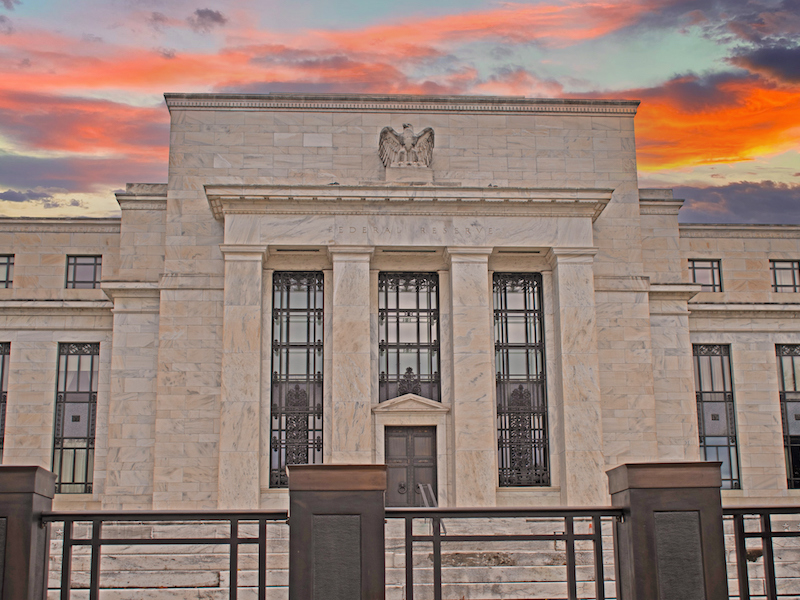
Consumer inflation remained persistently high last month, boosted by gas, rents, auto insurance and other items, the government said Wednesday in a report that will likely give pause to the Federal Reserve as it considers how many — or even whether — to cut interest rates this year.
Prices outside the volatile food and energy categories rose 0.4% from February to March, the same accelerated pace as in the previous month. Measured from a year earlier, these core prices were up 3.8%, unchanged from the year-over-year rise in February. The Fed closely tracks core prices because they tend to provide a good read of where inflation is headed.
The March figures, the third straight month of inflation readings well above the Fed’s 2% target, provide concerning evidence that inflation is stuck at an elevated level after having steadily dropped in the second half of 2023. The latest numbers threaten to torpedo the prospect of multiple rate cuts this year.
Fed officials have made clear that with the economy healthy, they’re in no rush to cut their benchmark rate despite their earlier projections that they would do so three times this year.
Wednesday’s figures will disappoint the White House as well. Republican critics of President Joe Biden have sough to pin the blame for high prices on the president and use it as a cudgel to derail his re-election bid. Polls show that despite a healthy job market, a near-record-high stock market and a decline inflation from its peak, many Americans blame Biden for high prices.
The March inflation report “pours cold water on the view that the faster readings in January and February simply represented the start of new-year price increases that were not likely to persist,” Kathy Bostjancic, chief economist at Nationwide, said in a research note. “The lack of moderation in inflation will undermine Fed officials’ confidence that inflation is on a sustainable course back to 2% and likely delays rate cuts to September at the earliest and could push off rate reductions to next year.”
On Wall Street, traders sent stock prices tumbling and bond yields rising, reflecting fear that the Fed may delay interest rate cuts indefinitely. The broad S&P 500 stock index sank 1% in early trading.
Chair Jerome Powell has stressed in recent months that the Fed’s policymakers need more confidence that inflation is steadily slowing to the Fed’s target before they will support a rate cut. Powell’s stance has elevated the profile of the monthly inflation reports, which will largely determine whether the Fed cuts rates this year. Lower rates would lead, over time, to reduced borrowing costs for businesses and consumers.
Overall consumer prices rose 0.4% from February to March, the same as in the previous month. Compared with a year ago, prices rose 3.5%, up from a year-over-year figure of 3.2% in February.
The costs of owning a vehicle were a key reason why prices jumped last month: Auto insurance surged 2.6% just in March and are up a dramatic 22% from a year ago. That increase reflects, in part, the rise in new-car prices over the past two years.
Average auto repair costs increased 1.7% from February to March and are up a sharp 8.2% from a year earlier. And the price of gas to power most vehicles surged 1.7% last month. Prices for new and used cars, though, fell slightly.
Clothing costs jumped 0.7% in March, the second straight month of sizable increases, though they have barely risen over the past year. Grocery prices, though, were unchanged last month and are 2.2% higher than they were a year ago, providing some relief to consumers after the huge spikes in food prices in the previous two years.
The chronically elevated inflation so far this year suggests that American consumers, on average, remain confident enough to keep spending despite steady price increases, said Laura Rosner-Warburton, senior economist at MacroPolicy Perspectives, a consulting firm. Likewise, she said, the surge in auto insurance and repair costs reflect the previous sharp increases in auto sales prices.
“It means that the consumer’s in good shape and accepting price increases still,” Rosner-Warburton said.
The inflation surge that followed the pandemic jacked up the costs of food, gas, rent and many other items. Though inflation has since plummeted from its peak of 9.1% in June 2022, average prices are still well above where they were before the pandemic.
Last month, employers ramped up hiring, and the unemployment rate fell to a low 3.8% from 3.9%. A report on manufacturing also showed that factory output expanded after more than a year of contraction.
Such signs of economic vigor also make the prospect of rate cuts, which typically occur when the economy stumbles, less likely. With growth healthy, some economists have asked, why cut rates at all? A strong economy also means that the Fed’s policymakers can take their time to consider when and by how much to reduce borrowing costs for consumers and businesses.
Lorie Logan, president of the Federal Reserve Bank of Dallas, said last week that she thought it was too soon to consider rate cuts. Another regional Fed president, Raphael Bostic of the Atlanta Fed, said he favored just one rate cut this year — and not until November or December.